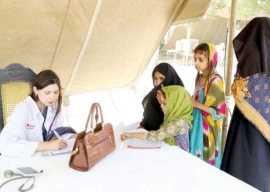
It is quite obvious that travelling by buses has become a daily nightmare for many. The sight of men perched precariously on the rooftops of buses, literally risking their lives just to get home after a long day’s work, is enough of a reminder. But female commuters have suffered even more as the state of public buses has declined. Women’s seats on buses were already barely a quarter of the seats of men, and now with CNG strikes being a permanent fixture of our lives, it’s nearly impossible for women to get space even to stand in the few buses on the roads. In contrast, qingqis are surprisingly quite women-friendly. For one thing, you are guaranteed a seat when you pay the fare which is a big deal to regular bus travellers who can only hope and pray that they get a place to sit. Additionally, qingqis are a lot more flexible when it comes to dividing the seating between men and women. If there are more women passengers, they get the larger six-seater on the front. If there are even more women, they get all the seats. And with their routes spreading to even the far flung places of the city, women commuters now have the means to travel more easily.
Let’s hope that the recently announced Metro bus project in Karachi comes to fruition. But until then, let us all rejoice that in a country where women’s movement in public places is increasingly threatened, qingqis provide a ray of hope.
Published in The Express Tribune, July 25th, 2014.


1719660634-1/BeFunky-collage-nicole-(1)1719660634-1-165x106.webp)

1732276540-0/kim-(10)1732276540-0-165x106.webp)




1724249382-0/Untitled-(640-x-480-px)1724249382-0-270x192.webp)







COMMENTS
Comments are moderated and generally will be posted if they are on-topic and not abusive.
For more information, please see our Comments FAQ